Shopping Cart
0 item(s) - R0.00-
- - Amplifier Module
- - Arduino Compatible - Development Platform
- - Arduino Compatible Modules & Shields
- - Breakout Boards
- - Cables / Hookup wires
- - Displays
- - Enclosures
- - Magnets
- - Motors & Gears
- - Nuts & Bolts
- - Peltier Cooler Heater
- - PIR
- - Sensors
- - Servo's & Motors
- - Solar
- - Stand Alone Modules
- - Stepper Motor & Drivers
- - USB Programmers & Converters
- - Voltage Regulator & Chargers
- - RC Hobby Parts
-
- - AC DC Cooling Fans
- - Cable Ties
- - Day/Night Switches
- - Electrical Plugs & Connectors
- - Gate Remotes & Receivers (Universal)
- - Heat Shrink Sleeves
- - Insulation Tape
- - Lighting & Globes
- - Mains Power Cables
- - Power Supplies & AC/DC Adaptors
- - Security Lights LED Type
- - Solar Charge Controllers
- - Surge Protectors
- - Timers
-
- - Battery Holders
- - Breadboard
- - Bridge Rectifier
- - Buzzers
- - Capacitors
- - Crystals
- - Diodes
- - Electromechanical
- - Fuses
- - Headers
- - Heat Sinks
- - IC Sockets HQ
- - IC Sockets TIN
- - IC's --> Semiconductor
- - Inductors
- - Laser Units (CD Players)
- - Microcontrollers & CPU's
- - Opto Electronics
- - Panel Meters And Displays
- - Passive Components
- - Pilot Lamps & Fittings
- - Plugs & Sockets
- - Resistors
- - Rotary Potentiometer
- - Semiconductors
- - Sensors
- - Switches
- - Transformers
- - TVS Diodes
- - Veroboard / Stripboard
- - Voltage Regulators
- - Zener Diode
Batteries
Facts About Batteries
- The battery can be traced back to the nineteenth century, with the invention of the first Voltaic pile by Alessandro Volta.
- A battery will leak when the battery gets too hot, expanding the paste inside the battery, which forces the chemicals in the battery to leak out of the seals of the battery.
- Batteries may also leak if you mix the two types of batteries - standard batteries and alkaline batteries.
Cylindrical Cell
The cylindrical cell continues to be one of the most widely used packaging styles for primary and secondary batteries. The advantages are ease of manufacture and good mechanical stability. The tubular cylinder can withstand high internal pressures without deforming.
Most lithium and nickel-based cylindrical cells include a positive thermal coefficient (PTC) switch. When exposed to excessive current, the normally conductive polymer heats up and becomes resistive, acting as short circuit protection. Once the short is removed, the PTC cools down and returns to conductive state.
Most cylindrical cells also feature a pressure relief mechanism. The most simplistic design utilizes a membrane seal that ruptures under high pressure. Leakage and dry-out may occur after the membrane breaks. Re-sealable vents with a spring-loaded valve are the preferred design. Some Li-ion cells connect the pressure relief valve to an electrical fuse that opens the cell if an unsafe pressure builds up. Figure 1 shows a cross section of a cylindrical cell.
Typical applications for the cylindrical cell are power tools, medical instruments and laptops. To allow variations within a given size, manufacturers use fractural cell length, such as half and three-quarter formats.
Refine Search
Ex Vat: R13.04
Ex Vat: R7.39
Ex Vat: R10.87
Ex Vat: R12.72
Ex Vat: R13.04
Ex Vat: R14.78
Ex Vat: R28.07
Ex Vat: R13.16
Ex Vat: R61.32
Ex Vat: R339.13
Ex Vat: R251.30
Ex Vat: R182.61
Ex Vat: R600.00
Ex Vat: R6.58
Ex Vat: R3.95
Ex Vat: R4.82
Ex Vat: R78.26
Ex Vat: R69.48
Ex Vat: R86.52
Ex Vat: R60.87



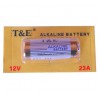
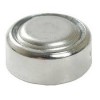
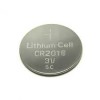
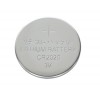

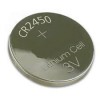
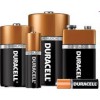
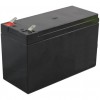
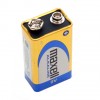
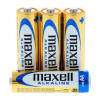
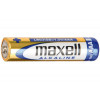
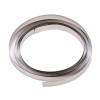




-80x80.jpg)















